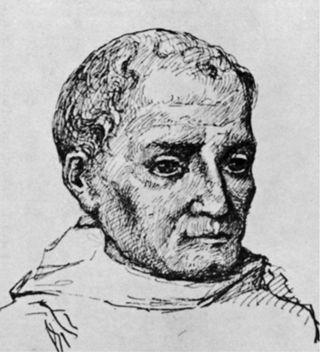The Sorcerer's Companion: A Guide to the Magical World of Harry Potter (56 page)
Read The Sorcerer's Companion: A Guide to the Magical World of Harry Potter Online
Authors: Allan Zola Kronzek,Elizabeth Kronzek
Morgana gives her name to one of the most famous mirages in the world, the
Fata Morgana
in Italy. Positioned over the Straits of Messina between mainland Italy and Sicily, this optical illusion first appears as a group of turreted castles that rise from the sea out of the fog. Look long enough, and you may see a tower turn into a figure—said to be Morgana herself—floating above the waves. This startling sight is believed to be caused by a complex interaction between layers of moist sea air, which distort and magnify the image of cliffs and houses on the shores of the straits.

 arvati Patil’s worst fear is having to confront a mummy, and we can’t blame her one bit. After all, her idea of a mummy isn’t the sort you might see lying peacefully in its sarcophagus at a museum, but the kind most of us know from horror movies—a lumbering monster that chases its victims with arms outstretched and bandages unraveling at every step.
arvati Patil’s worst fear is having to confront a mummy, and we can’t blame her one bit. After all, her idea of a mummy isn’t the sort you might see lying peacefully in its sarcophagus at a museum, but the kind most of us know from horror movies—a lumbering monster that chases its victims with arms outstretched and bandages unraveling at every step.
Although “mummy” is a very general term that can be used to describe any dead body that’s been preserved for an unusually long time, our popular conception of bandage-wrapped mummies was inspired by the ancient Egyptian practice of mummification, in which a body was drained of all its fluids, embalmed using a special chemical compound called natron, and then wrapped in fresh linen. Between 3000
B.C.
and
A.D
. 200 the ancient Egyptians preserved millions of human and animal corpses this way, interring their remains in pyramids, underground tombs, and elaborate cities of the dead known as necropolises. The Egyptians went to so much trouble because they believed that the souls of the dead required an intact body to complete their journey to the afterworld. They also thought that during certain important religious celebrations the spirit, or
ka
, of a dead person could reenter its mummy and interact with the living again.
Even though the Egyptians stopped mummifying their dead around the first century, mummies never disappeared from the popular imagination. During the Middle Ages, ground-up mummy powder was a popular ingredient in many medicines and magic
potions
. After Napoleon’s invasion of Egypt in 1798, mummies also became much sought after as historical curiosities and collectors’ items. The Italian adventurer Giovanni Belzoni made a small fortune raiding ancient Egyptian tombs, collecting mummies, and putting them on display throughout Europe. In the 1830s, Belzoni’s friend Thomas Pettigrew began selling tickets to mummy-unwrapping ceremonies, and these events proved so popular that, on at least one occasion, even the Archbishop of Canterbury had to be turned away at the door. By the end of the nineteenth century, it was possible to purchase an authentic Egyptian mummy at almost any British auction house, and many fine English gentlemen kept a mummy or two hidden away in the attic (just for the heck of it, as far as anyone can tell)!

It didn’t take long for such gory activities to inspire the fertile imaginations of fiction writers, who began to publish bestselling tales about mummies being brought back to life. In Edgar Allan Poe’s humorous short story “Conversations with a Mummy,” written in 1845, a group of Egypt-obsessed gentlemen sneak into a museum late at night and resurrect an ancient Egyptian corpse by electrocuting it. They receive a nasty shock of their own when they discover that their newly resurrected friend is not the primitive, uneducated monster they expected, but a suave three-thousand-year-old nobleman who knows more about astronomy, engineering, and science than any of the eminent Victorians who awaken him. The only modern invention that really impresses this mummy is a small peppermint breath mint, the likes of which he has never seen before!
The single most influential mummy story ever written in English is probably Sir Arthur Conan Doyle’s 1892 work, “Lot Number 249.” In this memorable tale about an ancient Egyptian brought back to life to commit murder and mayhem, Conan Doyle describes his mummy as “a horrid, withered thing” that stalks its enemies “with blazing eyes and stringy arms outthrown.” This description proved powerful enough to inspire a thousand imitators and firmly established the modern image of the mummy as a monster.
Today, there are almost as many movies, books, and short stories about mummies as there once were actual mummies. But don’t tell that to Parvati Patil. She’s got enough to worry about just fighting one monster at a time.


 icholas Flamel is best known to Harry Potter fans as the medieval alchemist who created the
icholas Flamel is best known to Harry Potter fans as the medieval alchemist who created the
Sorcerer’s Stone
—a miraculous substance that could change lead into gold and produce an elixir of immortality. At the time of Harry’s first term at Hogwarts (where the Stone is hidden away and guarded by
spells
and
charms
), Flamel is alive and well and residing with his wife Perenelle in Devon, England, at the ripe old age of 665. That’s just about how old the historical Nicholas Flamel would be were he alive today. For Flamel was indeed a real alchemist, he did have a wife named Perenelle, and if the writings he left behind are to be believed, he created the legendary Stone in his alchemical laboratory on January 17, 1382.

Nicholas Flamel
(
photo credit 60.1
)
Much of what we know about Flamel comes from his book
Heiroglyphica
, in which he tells how, almost by accident, he became an alchemist. When he was born—around 1330 in the small town of Pontoise, France—alchemy was already being practiced throughout Western Europe. Based on the practices of ancient Greek and Egyptian metalworkers, the secrets of alchemy were passed along through the Arab world and became available in Europe in Latin books around 1200. These books described sophisticated laboratory equipment, chemical ingredients, and complex procedures by which one could create the Sorcerer’s Stone and acquire enormous wealth, not to mention the promise of everlasting life. Alchemy was also said to be a spiritual practice, so that with a humble attitude and devotion to the task, the alchemist himself might be elevated to a state of new purity and nobility. While many people were skeptical of both claims, countless others set up homemade laboratories and devoted their lives to trying to manufacture the Stone.
